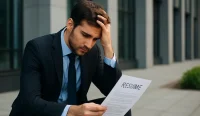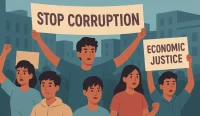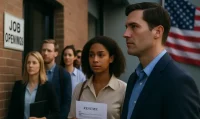The family of a deceased Tesla driver has filed a lawsuit against the company, alleging “fraudulent misrepresentation” of its Autopilot system contributed to the fatal 2023 collision.
The case, now moved to federal court, adds to growing scrutiny of the company’s partially automated driving technologies.
Crash Details and Lawsuit Claims
The incident occurred in Walnut Creek, California, involving a 2021 Tesla Model S that collided with a parked fire truck while Autopilot was engaged.
Genesis Giovanni Mendoza-Martinez, the driver, lost his life in the crash, while his brother Caleb, a passenger, sustained severe injuries.
The lawsuit, filed by the Mendoza family, accuses Tesla of exaggerating Autopilot’s capabilities through statements made by CEO Elon Musk, company blog posts, and public remarks.
The family’s attorneys argue the claims were designed to boost the company’s reputation and financial standing, ultimately leading to a false sense of security among drivers.
Need Career Advice? Get employment skills advice at all levels of your career
Tesla’s Defense
Tesla’s legal team denies responsibility, stressing the driver’s negligence caused the accident.
The company claims reliance on Tesla’s representations about Autopilot was not a “substantial factor” in the crash.
Lawyers maintain its vehicles and systems meet reasonable safety standards and comply with federal regulations.
Tesla has not commented publicly on the case, and attorneys representing the Mendoza family have declined interviews.
Looking for a job? Visit whatjobs.com today
Broader Implications for Tesla’s Technology
The lawsuit is part of a larger wave of legal challenges over the Autopilot and Full Self-Driving (FSD) systems.
At least 15 other active cases involve crashes where Tesla’s driver-assist technologies were in use.
Several of these cases, like the Mendoza family’s, have been moved to federal court, where fraud claims typically require higher proof thresholds.
The National Highway Traffic Safety Administration (NHTSA) is conducting an ongoing investigation into Tesla’s Autopilot, particularly its performance around stationary emergency vehicles.
Tesla has implemented numerous software updates during the investigation, but the agency is still evaluating whether these measures adequately address safety concerns.
Hiring? Post jobs for free with WhatJobs
Regulatory Scrutiny
Tesla has also faced regulatory backlash over its marketing of Autopilot and FSD.
The California Department of Motor Vehicles has accused the company of false advertising, claiming that promotional materials mislead drivers about the technology’s true capabilities.
NHTSA has similarly warned the company against portraying its vehicles as fully autonomous, as this could lead to misuse of the systems.
Tesla’s Competition in the Autonomous Driving Space
While Tesla continues to promise fully autonomous capabilities, competitors like Waymo and Pony.ai are already operating commercial robotaxi services.
Despite unveiling a design concept for a self-driving vehicle, the “CyberCab,” Tesla has yet to deliver on its long-standing claims of producing robotaxis.
CEO Elon Musk recently encouraged Tesla owners to demonstrate the capabilities of FSD to friends, calling it “magic.”
However, these promotional efforts have done little to alleviate concerns about the safety and accuracy of driver-assist technologies.
Looking Ahead: A Test for Tesla’s Safety and Accountability
The Mendoza-Martinez lawsuit underscores the tension between Tesla’s ambitious marketing of Autopilot and its real-world safety performance.
As federal investigations and lawsuits mount, the company faces increasing pressure to prove that its systems are not only innovative but also reliable and safe for widespread use.
This case may serve as a pivotal moment, not just for Tesla’s reputation but also for the broader conversation about the accountability of self-driving technology developers in the automotive industry.




